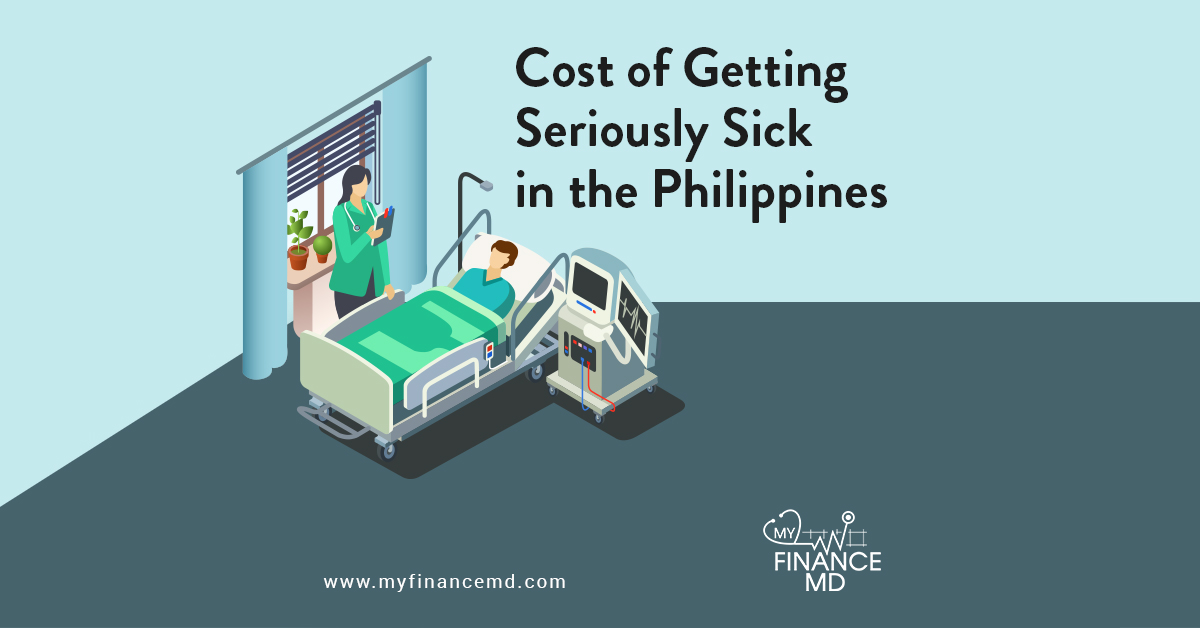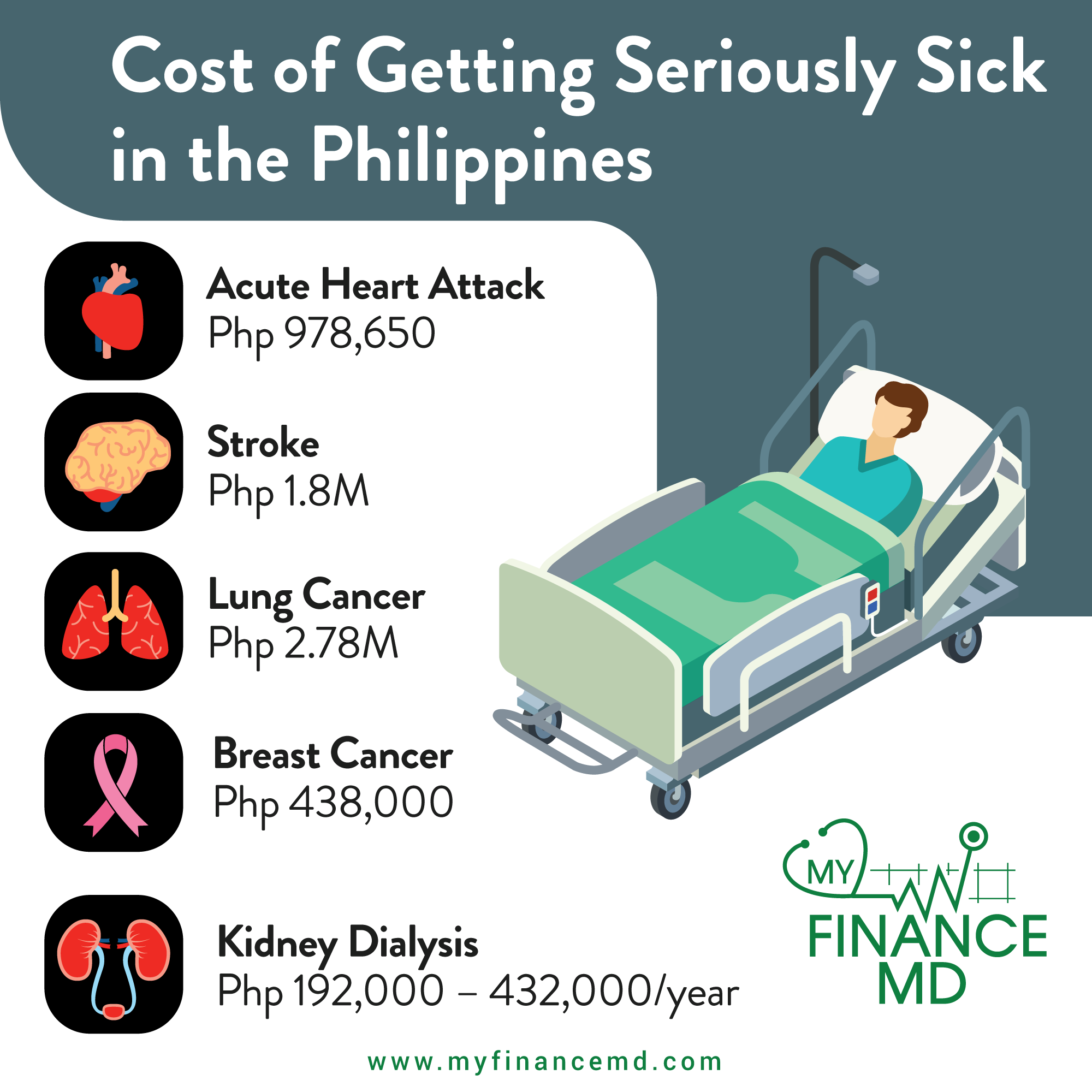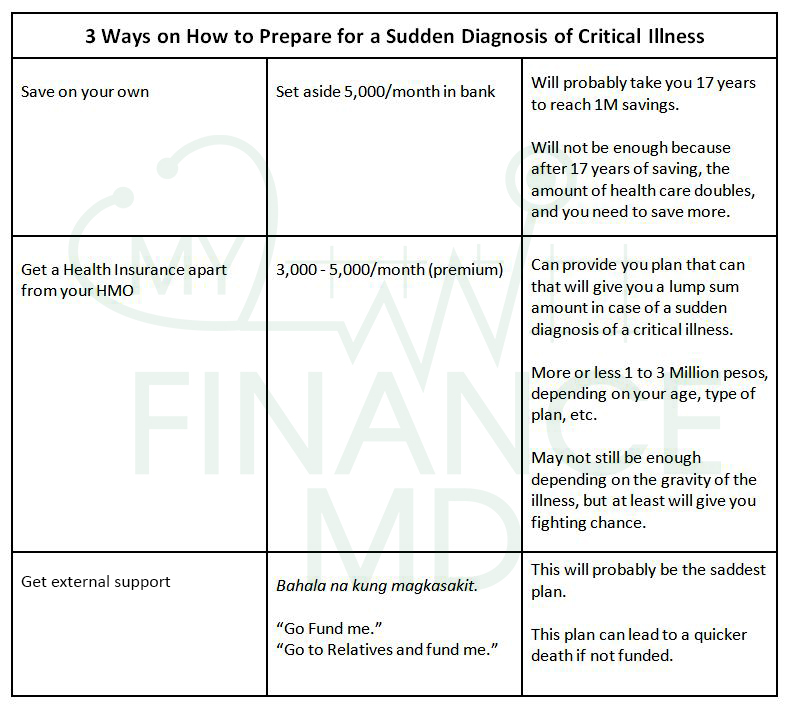
A few years ago, I went to Canada for a conference, together with me is a friend who also attended the said event. After the conference, we toured around Canada. In Quebec, I met Tita Sunshine, my friend’s Aunt. We saw here in a hospital because she was confined due to Breast Cancer. She was jolly and happy to see us. As we talked to her, it seems like she was not sick at all. I was even shocked to learn that she has been in that hospital for 2 years already and has not been home since the time she entered the hospital.
I immediately asked her, “How much are you paying for this?” Her reply is even more a shocked to me than my question, she said, “Nothing, it’s free from the government” I can just stare her in disbelief.
Unfortunately for us Filipinos, is not the same story to tell. As my mentor always says to us in our Health/Risk Management Class:
“If you are a Filipino, living in the Philippines, you have a health care problem.” – Jong Merida
Yes, because even though the citizens are paying one of the highest tax rates in the world, our current Health care system right now cannot provide for everything we need until treatment is complete. PhilHealth can only provide a certain fixed amount depending upon our illness.
Unlike other more progressive countries (Europe, Canada, Australia, etc.), whenever they get sick, they can be sure they will be treated for free until either they die or become completely well.
Let me scare you just a little bit more, and give you this startling statistic:
The Top 5 Leading Deadliest Sicknesses in the Philippines
- Heart Diseases – Makes about 17% of Death Annually in our country, making this the top cause of death.
- Hypertension – According to research by the WHO, more than 14 Million Filipinos suffer from Hypertension
- Stroke – is the second largest cause of death for Filipinos. According to recent WHO data, strokes in the Philippines account for 63,261 deaths, or 12.14% of deaths each year.
- Influenza and Pneumonia – World Health Rankings provides that Influenza and Pneumonia deaths in the Philippines account for nearly 10 % of deaths in the Philippines annually.
- Breast Cancer – Breast cancer is the leading cause of death among Filipino women, and unknown to many is the fact that the Philippines has the highest number of breast cancer incidents among 197 countries in the world. In addition, the Philippines saw a 589% increase in breast cancer over a 30-year period
Unfortunately, (84%) Eighty-four percent of Filipinos are not financially prepared for medical costs in case they are diagnosed with critical illnesses. (philstar)
Only about 4% Filipinos are enrolled in HMOs.
For those that are enrolled, the average HMO coverage of Filipinos is only about Php90,000/year, which can only cover “Diagnostics” for a critical illness, nothing more is left for Treatment. (wmc)
Let’s see how much do you really need if you actually get sick?

So, what can a Filipino do, to prepare for something inevitable?
There are 3 Ways on How to Prepare for a Sudden Diagnosis of Critical Illness:
- Save on your own. Set aside part of your monthly income that can be used in case of emergency. If you have a family history of Heart Attack, you might be needed to save at least a million pesos.
- Get a Health insurance apart from your HMO, that will give you a lump sum amount in case of a sudden diagnosis of a critical illness.
- Get external support. This is the “bahala na” attitude Filipinos are famous of. This happens if there was no prior preparation such as savings and plans intended for this kind of event. Getting external support could come from family, friends and can even extend to strangers. Some would even go to social media to get some help to more people.
You might be wondering what happened to Tita Sunshine in my story above? A few days after we left Canada, she died. May God bless her soul. The lesson there is, no matter how big the support each of us will probably receive from the government or from our insurance, our life is still temporary and there will come a time, we will be called home.
Be always prepared, financially, emotionally and spiritually. Life is indeed short.
Do you want to know how to get a Critical Illness Plan? Contact me here.
For your Financial Health,

Sources:
Department of Health
Association of Health Maintenance Organization
Philippine National Health Account
Read More:
- What are the Differences Between Health Insurance, HMO and PhilHealth?
- The Cost of Dying in the Philippines
- Creating a Living Will (CPR or DNR – Do Not Resuscitate)
- The Importance of Critical illness plan in Holistic Financial Planning
Latest posts by Pinky De Leon-Intal, MD, RFC (see all)
- Say Goodbye to Chronic Lifestyle Diseases (Hypertension, Diabetes, Cancer, Gout, etc.) with Right Food and Right Water - 23 May, 2023
- Embracing Superpowers: A Mom’s Journey as a Doctor, Professor, and Financial Consultant - 19 May, 2023
- Celebrating the Power of Women: Honored by Philippine Daily Inquirer - 17 May, 2023


